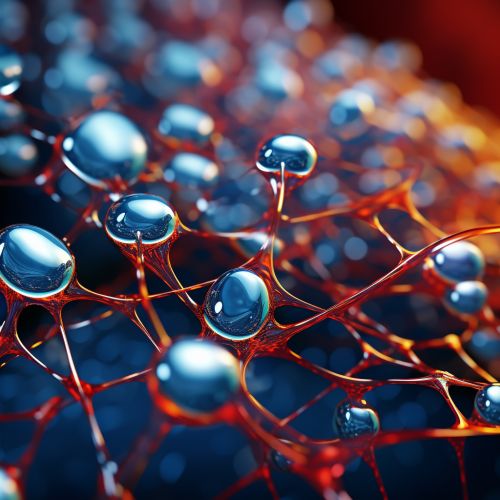Active Transport
Introduction
Active transport is a biological process that moves ions, small molecules, and macromolecules across a cell membrane from a lower concentration to a higher concentration. This process is against the concentration gradient and thus requires energy, typically in the form of adenosine triphosphate (ATP).


Types of Active Transport
Active transport can be classified into two main types: primary active transport and secondary active transport.
Primary Active Transport
Primary active transport directly uses chemical energy to transport molecules across a membrane. Most of the enzymes that perform this type of transport are transmembrane ATPases. A primary active transport event involves the ATP-driven pumping of hydrogen ions out of the cell by a proton pump in the cell membrane.
Secondary Active Transport
Secondary active transport, also known as coupled transport or co-transport, involves the use of an electrochemical gradient to drive the active transport of molecules. Unlike primary active transport, secondary transport does not directly involve ATP. Instead, it uses the energy from the ion gradient created by primary active transport.
Mechanism of Active Transport
Active transport involves the movement of substances against their concentration gradient, from an area of low concentration to an area of high concentration. This movement requires energy, which is typically provided by ATP hydrolysis.
Steps in Active Transport
- The molecule to be transported binds to a specific site on the carrier protein embedded in the cell membrane.
- ATP provides the energy for the change in shape of the carrier protein.
- The change in shape of the carrier protein allows the molecule to be released on the other side of the membrane.
- The carrier protein then returns to its original shape to pick up another molecule.
Role of Active Transport in Cells
Active transport plays a crucial role in a number of cell functions. These include nutrient uptake, waste removal, and maintenance of ion concentrations within cells.
Nutrient Uptake
Active transport is responsible for the uptake of essential nutrients from the environment into the cell, even when the concentration of nutrients is higher inside the cell.
Waste Removal
Active transport also plays a role in the removal of waste products from the cell. This is especially important in the case of toxins and other harmful substances that need to be quickly removed from the cell.
Maintenance of Ion Concentrations
Active transport helps maintain the correct concentrations of important ions within cells, such as sodium, potassium, and calcium. This is crucial for the proper functioning of cells.
Examples of Active Transport
There are numerous examples of active transport in biological systems. These include the sodium-potassium pump, the hydrogen-potassium ATPase, and the calcium pump.
Sodium-Potassium Pump
The sodium-potassium pump is a primary active transport system that moves sodium and potassium ions across the cell membrane. This pump plays a key role in maintaining the electrochemical gradient that drives secondary active transport.
Hydrogen-Potassium ATPase
The hydrogen-potassium ATPase, or gastric proton pump, is a primary active transporter that uses ATP to pump hydrogen ions out of the cell, while pumping potassium ions into the cell. This pump is responsible for the acidification of the stomach.
Calcium Pump
The calcium pump, or calcium ATPase, is a primary active transporter that uses ATP to pump calcium ions out of the cell. This pump plays a crucial role in maintaining the low intracellular concentration of calcium ions.
